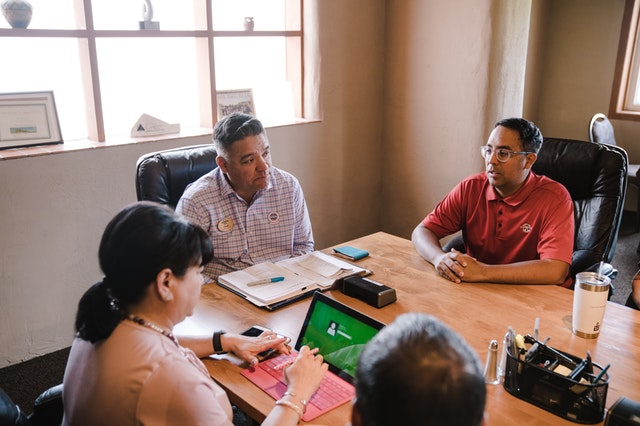3.1: Interventions and Problem Solving
- Last updated
- Save as PDF
- Page ID
- 43048
Social issues impair social functioning and negatively impact the lives of individuals, groups, and organizations (Bruhn and Rebach 2007). People effected by a particular social issue may face a variety of obstacles and challenges associated with the problem including labeling, stigma, discrimination, and isolation. Sociological practitioners work to address the problem by changing the social setting, arrangement, norms, and behaviors surrounding the issue and the people involved. A sociological practitioner may serve as the facilitator of this social change, a broker by acting on the behalf of others for change, or a clinician by providing direct services or help to change the situation of individuals and families.
There are six approaches most commonly used by sociological and other professional practitioners, communities, and clients to address social problems and create change. To resolve or improve situations, different problems require different approaches based on the client needs and social resources available to them. Each sociological approach incorporates a different level of analysis to assess the problem with a specific focal area of intervention. When social change requires different levels of analysis, sociological approaches must identify and explore multiple solutions across continuums. Not all approaches result in an expeditious solution. Sociological approaches and interventions take planning and time to implement and can take years to gain permanent change or improve people’s lives.
Process of Intervention
Regardless of approach, sociologists follow an incremental process of intervention to remedy a social problem. Each sociological approach includes a process of intervention that includes an assessment, planning, implementation, and evaluation phase. There are no timelines of completion defined within each phase. Rather the sociological practitioner, clients, and other impacted individuals or groups set deadlines and completion parameters based on context and need.
The first phase examines the social problem and needs of those it impairs. This is an investigative stage to gather information and understand the situation to define the problem (Bruhn and Rebach 2007). A sociological practitioner must first identify the presenting problem and client(s). The presenting problem refers to the client’s perspective of the problem as they see it in their own words (Bruhn and Rebach 2007). The assessment is a discovery phase of the history and evolution of the problem within the geographic region to find out who is seeking help and why. The assessment also helps determine the role or involvement of the sociological practitioner in the intervention.
An assessment is a case study guided by the nature of the problem and clients (Bruhn and Rebach 2007). Data collection may include interviews, focus groups, surveys, and secondary analysis (e.g., analytic data, educational records, criminal records, medical files, etc.). Findings and results are presented and discussed with clients and other involved parties to formulate solutions and objectives of intervention.

The next stage in the process is to plan the steps for achieving intervention objectives. The plan is a formal (written) agreement among interventionists (including the sociological practitioner) and client(s) outlining the objectives and roles and responsibilities of each person involved. The plan will include observable, measurable objectives that include: 1) subject and verb stating the condition to achieve, 2) amount or percentage of reduction or improvement of the condition, and 3) timeframe or deadline for completion (Bruhn and Rebach 2007). Both process and outcome objectives must be delineated in the plan. Process objectives will focus on program operations or services, and outcome objectives concentrate on the results of the intervention against baseline data (i.e., data collected prior to intervention). Interventionists and clients work together to develop a plan so everyone has an equal voice and understanding of their duties, obligations, and work to complete in the implementation phase.
Consider a social problem you would like to address in your community. Conduct secondary analysis of the issue to identify the presenting problem, clientele, and existing community services. Explore nonprofit and public agencies in your community working on the problem you chose to help you gather information.
After completing your analysis, draft four observable, measurable objectives of intervention for the problem and population you wish to address. Two objectives must focus on process and two on outcomes. All outcomes must include a verb and subject stating the condition to achieve, amount or percentage of reduction or improvement of the condition, and timeframe or deadline for completion.
The third phase in the process centers on implementation. In this stage, the plan commences according to the steps outlined in the formal agreement. Implementation puts the plan into action by following the proposed sequence and schedule. This phase engages strategies in order to accomplish objectives. For example, solving chronic poverty in your community might require employing several strategies such as improving K-12 education, increasing higher education enrollments and job skills training, providing access to health care, and developing employment opportunities. During the implementation phase, interventionists and collaborators will initiate and work on each strategy for change.
The final phase in the process of intervention is evaluation. Sociologists use evaluation to find out if a program, service, or intervention works (Steele and Price 2008). There are two types of evaluation. A process or formative evaluation gathers information to help improve or change a program, service, or intervention. Did everything occur and work according to plan? Sociological practitioners work with clients to determine program strengths, weaknesses, and areas of improvement to strengthen or adapt the program (Steele and Price 2008). An outcome or summative evaluation measures the impact of the program, service, or intervention on clients or participants. Were benchmarks achieved or changes made? Practitioners measure changes in clients over the duration of their participation from start to completion. The impact evaluation determines if change occurred, any unintended outcomes, and the long-term effects.

Evaluation is an ongoing task tracking program progress from beginning to end (Bruhn and Rebach 2007). Interventionists and practitioners must monitor the program continuously to ensure the service or intervention is advancing toward change, and adjustments or alternatives are deployed to increase effectiveness in a timely manner. The goal of evaluation is to know why a program, service, or intervention succeeded or failed to reform or adapt present and future support and solutions. Evaluation is a mechanism of continual improvement by regularly providing information and identifying unintended consequences.
Evaluation requires both quantitative and qualitative data (see page 5) using a variety of data collection methods and tools to gather information (e.g., tests, questionnaires, archival data, etc.). Data collection tools vary from program to program, sometimes tools exist to conduct an evaluation, and other times practitioners must develop them (Viola and McMahon 2010). Practitioners lead in the development of data collection protocols, tools, and instruments for review by participants (e.g., clients and community members) before they are ready to use.
As a contributing member of an evaluation team, sociological practitioners (see page 3) must be aware of role-conflict. It is imperative to avoid role-conflict in a participatory evaluation model. In other words, practitioners must be aware of their role within the evaluative context or situation as to whether one is serving as a researcher, practitioner, or interventionist (i.e., clinical sociologist). It is difficult to implement the scientific method (process and procedures) in the field within the standards of academic research when serving as a practitioner (Bruhn and Rebach 2007). Sociological practitioners or interventionists do not always have control over the evaluation research, study environment, or time to complete an evaluative study as prescribed by the scientific method.
The Workforce Internship Networking (WIN) Center at West Hill College Lemoore in California connects and supports students and alumni by providing employment, occupational readiness, and job placement information and resources to advance personal career goals. The WIN Center provides a space for employers and students to connect. At the WIN Center, students and alumni receive skills training, employment and internship application assistance, and support in creating a professional profile.
- Describe why it might be important to evaluate the WIN Center.
- Considering the importance of evaluating college campus programs, how often would you recommend evaluating the WIN Center’s programs and services? What should the evaluation examine?
- What role could program monitoring play in the overall evaluation of the WIN Center?
- If you were responsible for overseeing program monitoring and the evaluation of the WIN Center, what data would you collect to assess its impact?
In addition, evaluations may cause tension between practitioners (interventionists) and evaluation associates. Interventionists are responsible for providing data and keeping records while implementing program activities. Conflicting demands for an interventionists’ time and energy during the program implementation process may lead to a delay in gathering and sharing data with evaluators. Evaluation is not always equally valued, and some interventionists may consider evaluation unimportant or a threat to their work or process resulting in uncooperative behavior or interest.


